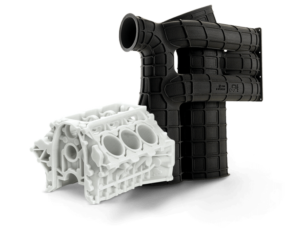Creep, often referred to as cold flow, pertains to the permanent deformation that materials undergo over time under static loads. It’s a critical factor in evaluating a product’s lifecycle. This article delves into the intricacies of creep, especially in polymeric materials, and highlights its significance in various industries.
Creep Resistance: A Must for High-Temperature and Load Applications
When designing for consistent performance under high temperatures and sustained loads, creep-resistant materials are imperative. These materials find utility in diverse applications, including:
- Structural Components: Beams, columns, and hanging supports.
- Hydrostatic Pressure Vessels: Pipes, tanks, and valves.
- Joints and Interference Fittings: Over-moldings, press fits, snap fits, and mechanical fasteners.
Given the molecular composition of polymeric materials, designers and engineers must prioritize creep resistance. Plastics, due to their composition, are more prone to deformation over time under constant pressure, temperature, and load than metals.
A Nuanced Approach to Creep
Notably, creep isn’t invariably detrimental. In certain applications, controlled creep is advantageous, such as in seals that necessitate tension relief. The versatility of plastics lies in their ability to offer varying levels of creep resistance, catering precisely to application requirements.
Quickparts: Expertise in Creep Management
Quickparts is well-versed in the implications of creep failure and offers insights into material selection and design to minimize its effects.
Understanding the Creep Progression: Stages Unveiled
Creep unfolds in distinct stages, aiding in predicting the longevity of a part or product.
-
Primary Creep: Initial exposure to heat or load results in immediate strain. Subsequent deformation persists even under the same thermal or mechanical pressure. This stage progresses rapidly.
-
Secondary Creep: Creep reaches a steady state after primary creep, marked by strain hardening. The material’s progression becomes linear during this phase, allowing engineers to estimate the time until failure.
-
Tertiary Creep: Rapid creep onset precedes ultimate failure. Microstructural changes, including grain boundary shifts and internal cracks, manifest.
Unveiling Creep-Resistant Plastics
High-performance plastics present a compelling alternative to metals. These plastics offer numerous advantages, such as cost-effectiveness, reduced weight, and faster production, while mirroring mechanical performance. Noteworthy creep-resistant plastics include:
- PEEK (PolyEtherEtherKetone): Ideal for aerospace, automotive, medical, and electrical applications due to its high durability under elevated temperatures and loading conditions.
- ECTFE (Ethylene ChloroTrifluoroEthylene): Prominent in chemical storage tanks, vessels, and piping systems for its exceptional creep resistance and abrasion resistance.
- PAI (Polyamide-Imide): Especially the bearing-grade variant, suitable for high-temperature conditions and tight-tolerance parts.
Elastomeric Creep: An Intricate Tale
Elastomers, akin to rubber, display unique creep patterns due to their elastic properties. Reversible creep relaxation and irreversible viscous flow are two modes of creep affecting elastomers. These polymers are employed in seals, gaskets, and springs, where shape changes under pressure are essential.
Strategies to Mitigate Creep: Design Insights
Mitigating creep involves material selection, meticulous design, and adherence to best practices in manufacturing. Designers can adopt these measures:
- Opt for semi-crystalline polymers like PA6, PA66, PP, or PEEK, incorporating fillers to minimize segmental motion.
- Choose semi-crystalline resins with larger grain sizes for enhanced creep resistance.
- Design components to minimize prolonged loading.
- Prioritize materials with higher melting points aligned with the intended working temperature.
Empowering Design with Creep Management
Creep, though inevitable, is manageable with the right material, design considerations, and manufacturing protocols. Quickparts excels in this realm, offering:
- A plethora of plastic material options
- Evaluation of materials based on application requirements
- Implementation of best practices for successful product delivery
Leveraging Creep for Success
Creep might pose challenges, but it’s a facet that spans all materials. While it garners more attention in plastics, the merits of high-performance polymers often surpass those of metals. By understanding, anticipating, and managing creep, businesses can ensure products last as intended.
Let Quickparts be your guiding partner in this journey:
- Assistance in material selection
- Evaluation of material options
- Adherence to best practices for successful outcomes
To delve deeper into creep mitigation or discuss your project, reach out to our expert team. Contact us at +1 931-766-7290 or via email at contact@quickparts.com.


